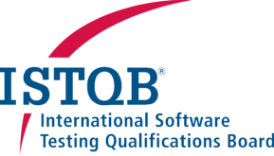Certified Tester Agile Test Leadership at Scale (CT-ATLaS)
The ISTQB® Agile Test Leadership at Scale (CT-ATLaS) certification focuses on how to organize and improve quality and testing across multiple teams in an agile organization. It also covers how to approach quality and testing at a strategic level in order to achieve higher business agility in an organization. CT-ATLaS covers how to scale testing and quality assurance efforts by fostering a quality mindset and culture across the organization. This includes shifting from a traditional test management approach typically used in sequential development models to a quality assistance approach which builds on Lean and Agile principles and values. It also includes how to adopt common Lean and Agile techniques and processes for analyzing and solving problems and how to use them to improve testing and quality in the organization.
As Agile Test Leadership at Scale focuses on the organizational level, it supplements the Advanced Level Agile Technical Tester focusing on technical practices. It also supplements and is complementary to the ISTQB® Advanced Level Test Management certification, which focuses on projects and not on the organizational aspects. In addition, Advanced Level Test Management covers traditional approaches and hybrid approaches whereas Agile Test Leadership at Scale focuses only on agile approaches.
The Advanced Level Agile Test Leadership at Scale certification is aimed at people who work in an organization which is pursuing agility at scale or business agility, and who already understand agile and agile testing. This certification will be a great benefit for people working in roles such as: Test Manager, Head of Testing, Test Analyst, Quality Engineer, Quality Assurance, Quality Coach, Member of an Agile Team, Member of the leader group of multiple Agile Teams, Project Manager, Release Train Engineer, Scrum Master.
To obtain this certification candidates must hold either a valid Certified Tester Foundation Level certificate 4.0 (CTFL 4.0) certification OR a valid Certified Tester Foundation Level certificate prior to the CTFL 4.0 plus a valid Certified Tester Foundation Level Agile Tester certificate, and have sufficient practical experience. Refer to the relevant Exam Board to determine the specific practical experience criteria.

An Agile Test Leadership at Scale certificate holder can:
- Foster a value-driven quality mindset and culture
- Co-create and implement an organizational test strategy that develops quality and testing capabilities
- Continuously improve test processes at an organizational level addressing test challenges in the context of Agile at scale product development
Chapter 1 Quality Assistance
Chapter 1 introduces quality assistance as an approach to quality management that is crucial to developing and sustaining a value-driven organization. It covers how quality assistance as an approach fits with known software testing concepts such as test management, quality control, and quality assurance. Agile Test Leadership at Scale focuses on enabling others in the organization to perform quality and testing responsibilities in order to foster a quality mindset and culture on an organizational level. Chapter 1 emphasizes four important skills to build competencies and scale quality and testing in an organization.
Chapter 2 Improve Quality and Flow in a Value-Driven Organization
Chapter 2 establishes methods to facilitate the identification and optimization of development and operational value streams. It also describes what a Value Stream is, the notation used to create a Value Stream Map and why it is essential to understand the concepts and thinking behind this Lean methodology. The chapter continues with how to analyze a Value stream from a quality and testing perspective including suggestions for key metrics. Lastly, it highlights the importance of eliminating waste as a means to improving Quality and Flow in a Value-Driven Organization.
Chapter 3 Continuous Improvement of Quality and Testing
Chapter 3 builds on the improvement methods established in chapter 2 but also expands on techniques to support the consistent and sustainable solving of problems. It explores approaches like the PDCA cycle to achieve these objectives and instils an improvement culture in an organization. The chapter introduces systems thinking and root cause analysis as approaches to identify causes of quality and testing issues in value streams. It also covers the technique causal loop diagram. Lastly, chapter 3 expands on understanding problem solving techniques and their consistent application across an organization.
Chapter 4 Organizational Test Strategy in a Value-Driven Organization
Chapter 4 establishes an Organizational Test Strategy and introduces practices supporting DevOps and explains the importance of incorporating them into the organizational test strategy. At its core, it aims to provide guidance on how a value-driven organization may create and implement an organizational test strategy, and also how to validate if the testing aligns to the core business and technical needs by using assessment techniques.
It also explores how an Agile Test Leadership fits into a value-driven organization while highlighting a different set of responsibilities that come into play.
Chapter 5 Test Processes in a Value-Driven Organization
This chapter is devoted to the analysis of test processes in a Value-Driven Organization and enables the participant to analyze challenges specific to testing in the context of agile at scale product development. Chapter 5 also covers agile at scale practices that help coordinate test efforts across agile and non-agile teams. It also defines related test and flow metrics establishing transparency for stakeholders. Part of the chapter is also focused on the analysis of test activities and test processes that are important to fit business agility using a quality assistance approach. Lastly, chapter 5 introduces and expands on which test activities should be performed by stream-aligned teams and which should be performed by specialized service teams.
For more information on how to get certified contact the local Member Board.
The Future
The ATLaS Task Force is dedicated to continuously improving the ATLaS certification.
People are welcome to give suggestions by using the Contact Us (select correct category in the contact form).
